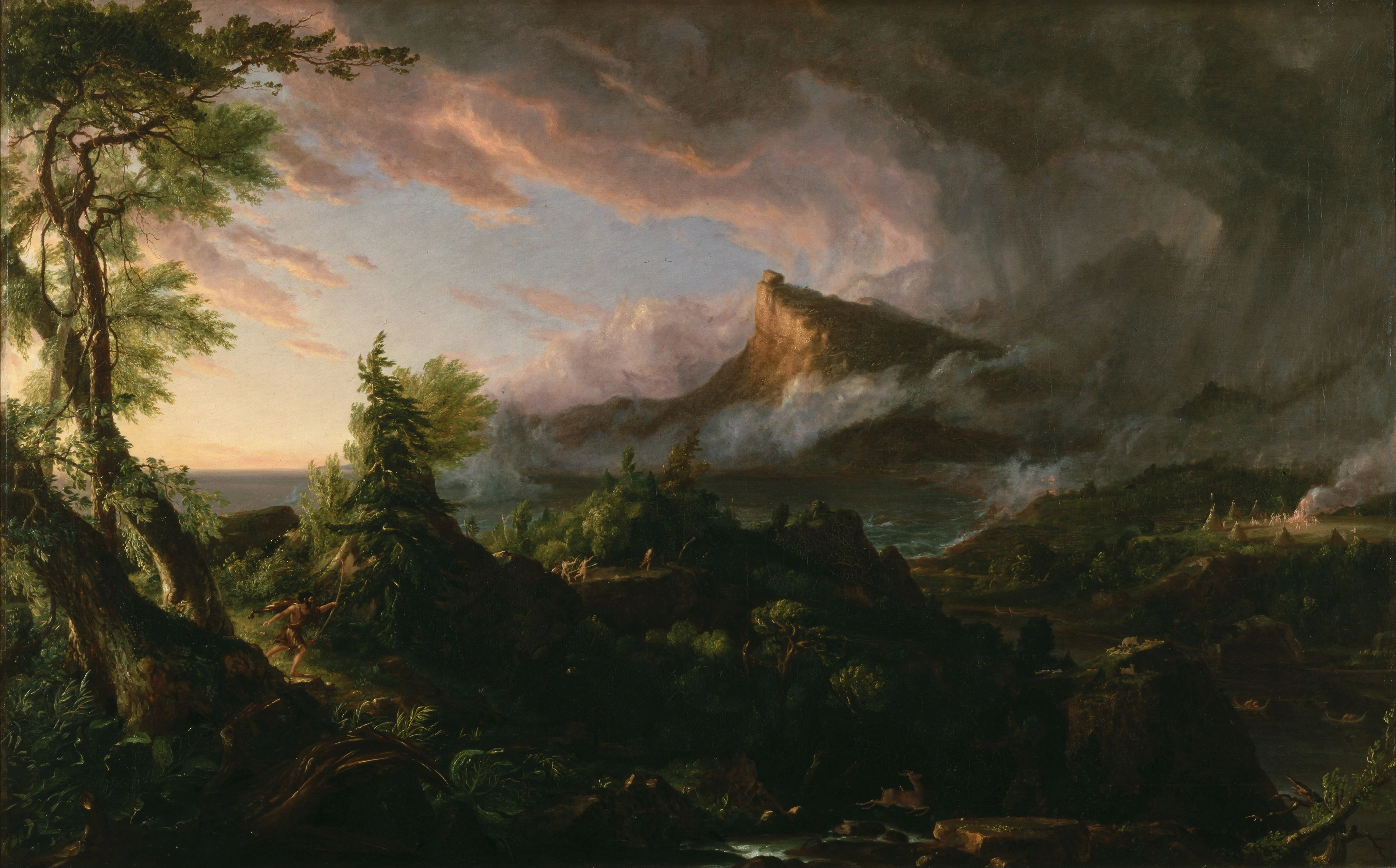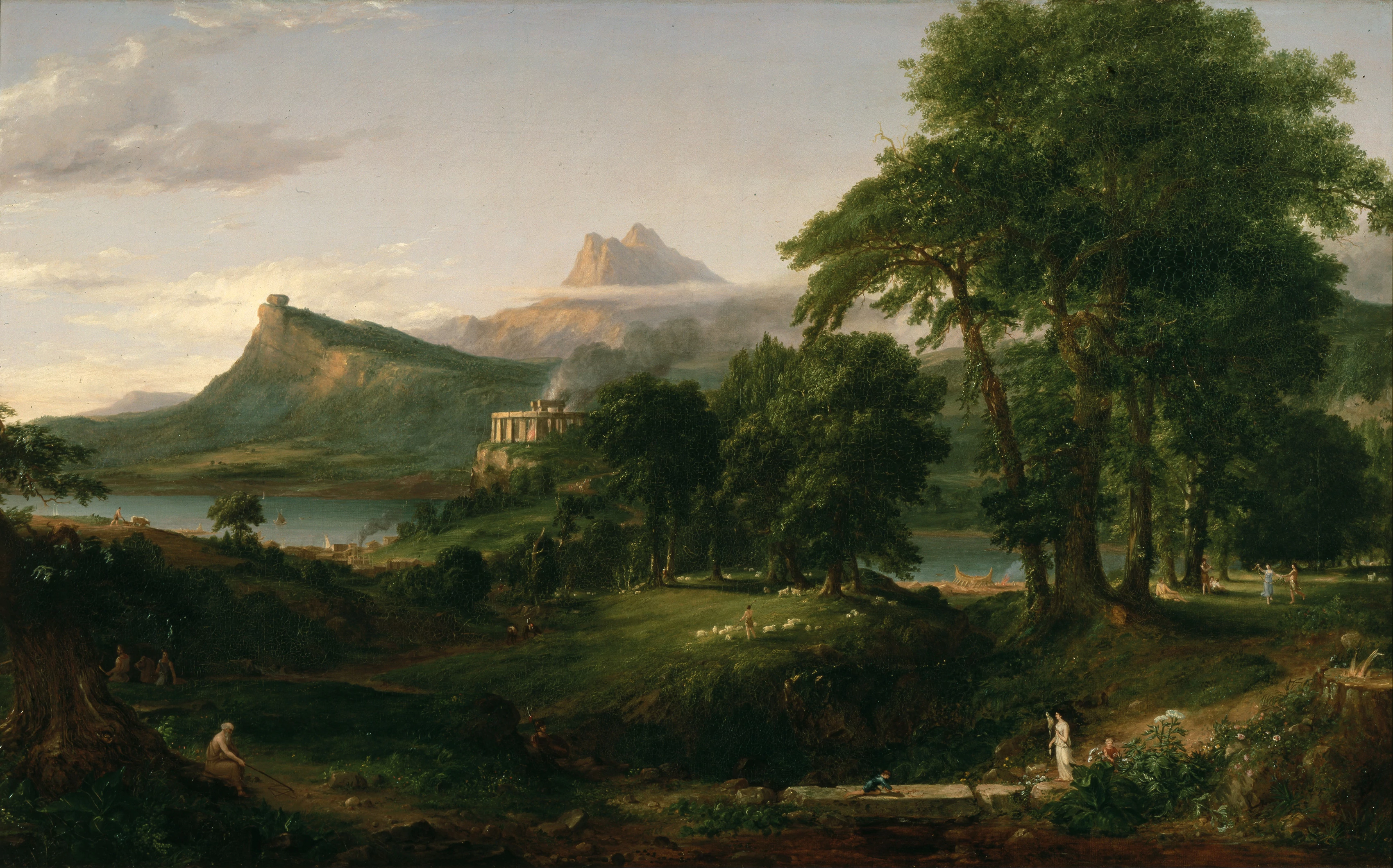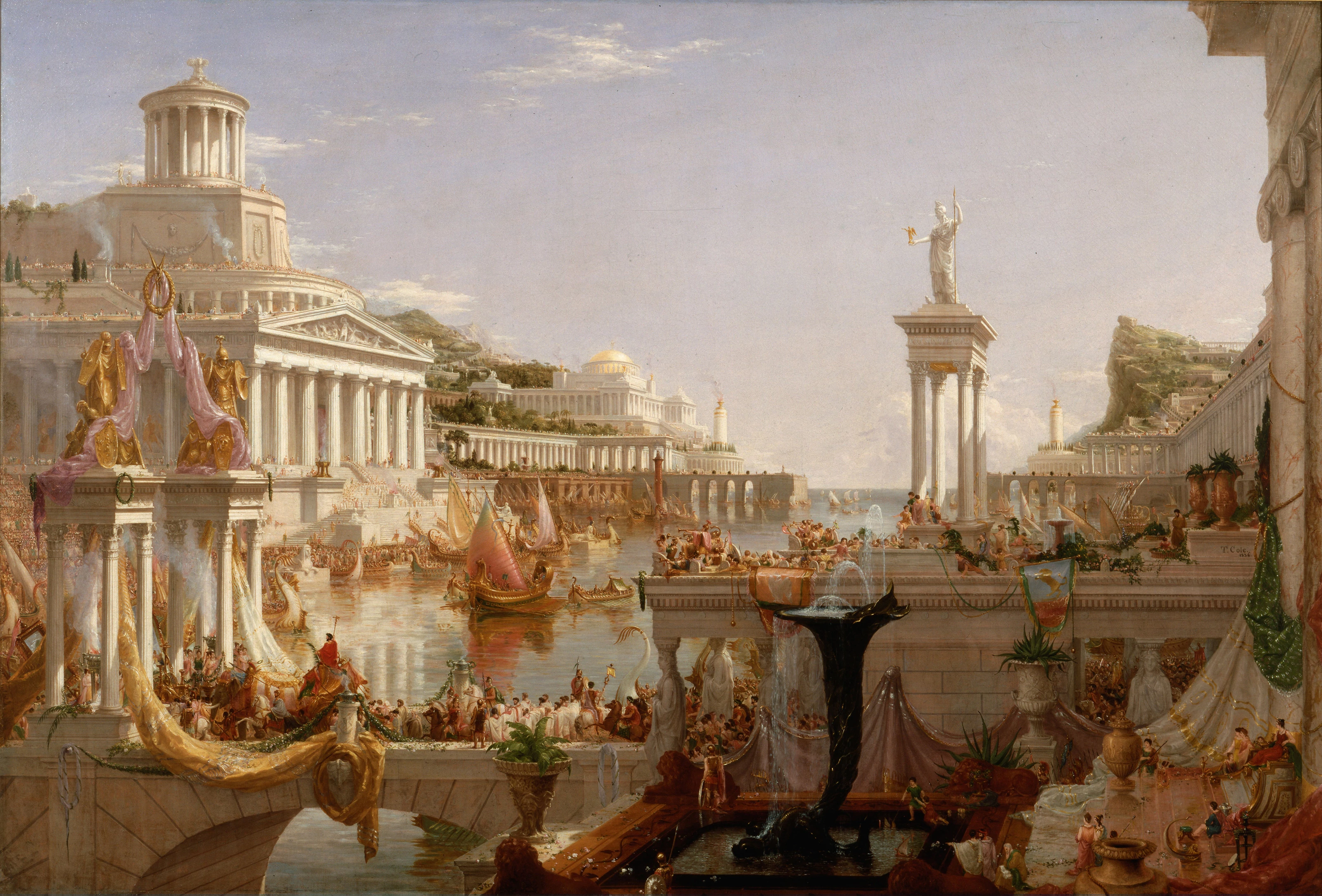
The Course of Empire 1: The Savage State Thomas Cole, 1834

The Course of Empire 2: The Pastoral State Thomas Cole, 1834

The Course of Empire 3: The Consummation of Empire Thomas Cole, 1835 – 1836

The Course of Empire 4: Destruction Thomas Cole, 1836

Starting in 1833 Thomas Cole spent 3 years creating The Course of Empire, a series of five paintings describing the arc of human culture from ‘savage wilderness’ through high civilization and its inevitable destruction. The 1830s were an optimistic time in America. The Erie canal had been completed, and the first US locomotive was making its first trips. Industrialization, baby. Thomas Cole’s Course of Empire was a warning against the pride of empire building, and showcased the dreamy idealization of the pastoral life. In newspaper advertisements for his series, Cole quoted Canto IV of Byron’s Childe Harold’s Pilgrimage:
There is the moral of all human tales;
'Tis but the same rehearsal of the past.
First freedom and then Glory – when that fails,
Wealth, vice, corruption – barbarism at last.
And History, with all her volumes vast,
Hath but one page...




